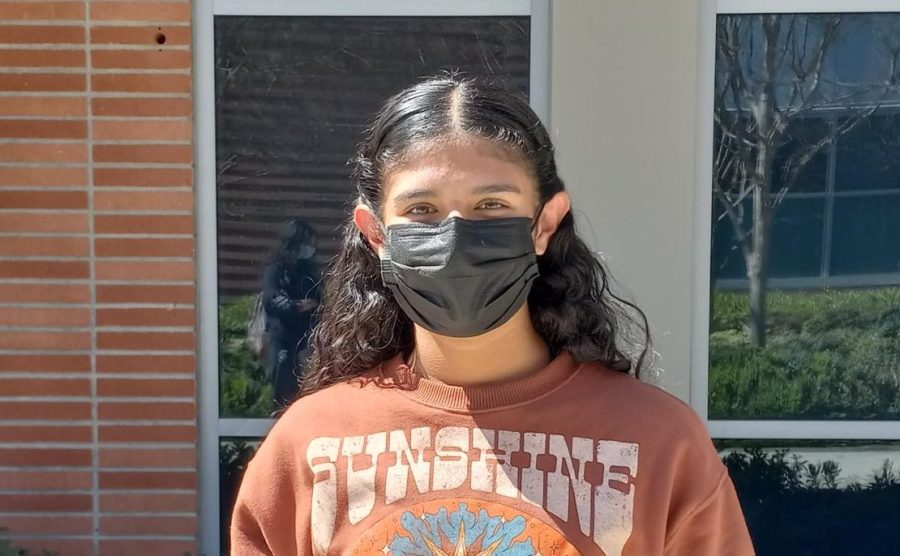Student Feature: Isabella Cordeiro
March 22, 2022
When attending a play, you’re naturally drawn to its theatrics, and sometimes, it’s easy to forget to appreciate what’s going on behind the scenes: every adjustment in lighting and sound, every prop, every costume, and every scene design. Isabella Cordeiro is a freshman in Arcadia High School’s (AHS) Stagecraft course who detailed her experience in Stagecraft.
Cordeiro first took Technical Theater in middle school, and after enjoying the class, she chose to take Stagecraft at AHS. While Foothills Middle School’s Technical Theater and AHS’ Stagecraft are similar in some ways, Cordeiro found the programs a little different.
The AHS Performing Arts Center “is a lot bigger of a theater, and there’s more money in this program, so we definitely have access to a lot more stuff,” Cordeiro said.
Stagecraft is also very hands-on, and the students learn a surprisingly large variety of skills.
“We go through week-long classes with each teacher, and they teach us about a different subject in theater,” Cordeiro said. “For the first time, we learned safety when building stuff, because we use power saws and drills for sets. And then we learned sound, the basics of that; the basics of lighting; how to design and make costumes, like stitching; just a lot of basics… It’s kind of cool, because everytime we do the week-long classes, you get divided into new groups, so you meet new people every time.”
Cordeiro had these week-long classes in the beginning of each semester; she and her classmates would rotate for about a month before they began building the set for the next show—a process called “load-in”.
“Load-in is around a month before the show, and it’s two weeks straight of building the set, making props, and getting everything ready,” Cordeiro said.
Depending on the group the students are assigned to, they can learn more about a specific topic in Stagecraft. For example, on set, Cordeiro learned how to secure platforms together by drilling in screws, which she wasn’t taught in the week-long class.
Along with load-in, there’s a process known as Tech Week, which is approximately two weeks before the show and two weeks long. Stagecraft students have the option to stay after school and help prepare and run the show.
“You run lights, you run sound, you mic people,” said Cordeiro. “You help them prepare the show, and then on the actual show day you go and you help run the show.”
For Cordeiro, Stagecraft is especially valuable because, along with having fun, she’s able to take what she’s learned and apply it to her life outside of school.
“I learned a lot of skills on how to accomplish tasks on my own,” she said. “I also learned how to use different power tools, and how to build different stuff. I learned how to work in the theater, and a lot of the stuff we learned in Stagecraft is stuff that we can take towards a job in the future.”
However, putting in the time for Stagecraft, on top of her academics and two sports, can be difficult for Cordeiro, but she makes it work.
“We have to get 20 hours outside of school [each semester], meaning we need to go in for load-in, Tech Week, small orchestra shows, or dance shows,” she explained. “For the first semester, I was able to get my hours, because my volleyball season had already ended. So it wasn’t difficult, and I only had to do a few hours after school, so I was able to get home with enough time to do all my homework. This semester, it’s a lot harder because I’m in the middle of my softball season, so it’s been really hard to get hours…But on Fridays, I go and I can get around four hours.”
Despite these challenges, Cordeiro doesn’t regret her decision in taking Stagecraft and would definitely take Advanced Stagecraft next year if she can!

